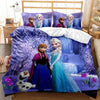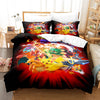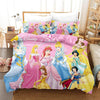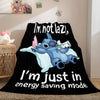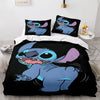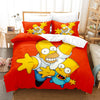Selecting the perfect kids' bedding can be an exciting and essential decision for parents and their little ones. Comfortable and visually appealing bedding can not only ensure a good night's sleep but can also enhance the overall look and feel of a child's bedroom. With an overwhelming range of colours, patterns, materials, and themes available, choosing the right bedding that matches a kid's personality and preferences can be a fun process for the entire family.
Safety and comfort should be prioritised when it comes to kids' bedding. The fabric and materials used directly impact the quality of sleep as well as overall health. Opting for breathable, hypoallergenic, and gentle textiles like organic cotton or bamboo will ensure the bedding is soft on a child's skin whilst minimising the risk of allergies.
Beyond the functional aspects, creative and attractive designs on kids' bedding can add a touch of magic to their sleeping environment. Themes based on a child's favourite cartoon characters, animals, or patterns enable parents to personalise the bedroom and encourage a sense of ownership in the child. A combination of comfort, safety, and engaging designs can contribute to a rewarding bedding selection experience for children and parents alike.
Types of Kids Bedding
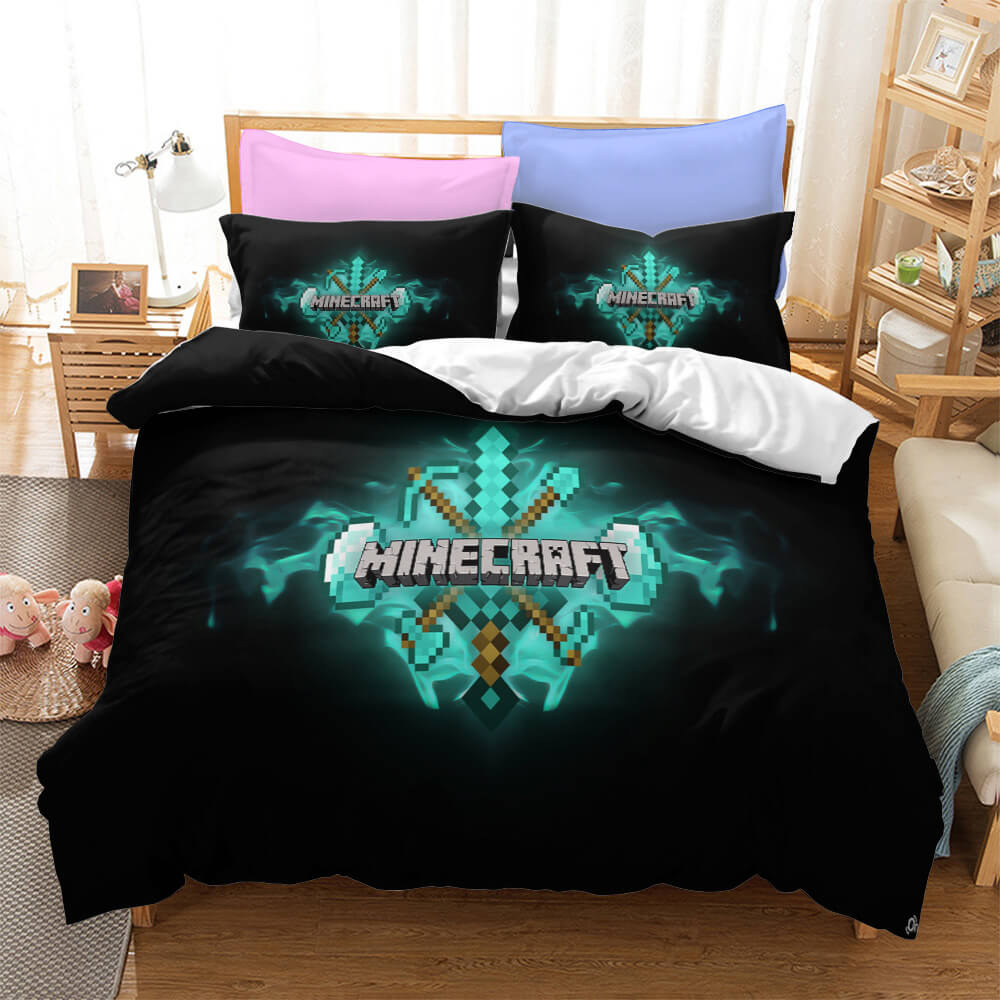
Kids bedding comes in a variety of styles, materials, and sizes to suit the preferences and needs of your child. In this section, we will discuss some of the common types of kids bedding available in the market.
Duvet covers: Duvet covers are a popular choice for kids bedding, as they are easily washable and can be changed frequently. They come in various designs, colours, and themes, allowing you to pick the perfect one for your child's room. Made from materials like cotton, polyester, and microfiber, duvet covers provide comfort and warmth throughout the year.
Fitted sheets: Fitted sheets are an essential component of kids bedding, providing a soft and smooth surface for your child to sleep on. They are designed to fit snugly over the mattress, and come in various materials such as cotton, flannel, and jersey. Fitted sheets are available in several sizes to accommodate different bed sizes like single, double, and bunk.
Pillowcases: Pillowcases play a vital role in ensuring a comfortable sleep for your child. They are designed to fit standard pillows and are made from various materials like cotton, microfiber, and satin. Pillowcases can be found in different colours, patterns, and themes to complement the rest of your child's bedding.
Blankets and throws: Blankets and throws add an extra layer of warmth and comfort to your child's bed. They come in a range of materials, including fleece, cotton, wool, and more. Blankets and throws are available in various styles, sizes, and colours, making it easy to find one that suits your child's room decor.
In addition to the above-mentioned types, kids bedding also includes quilts, bedspreads, and weighted blankets. When choosing kids bedding, it's important to consider factors such as comfort, ease of cleaning, and the preferences of your child. Equipping your child's bed with quality bedding will ensure they have a comfortable place to sleep and rest.
Material Choices

When selecting bedding for your children, there are several material options to consider. Each offers unique properties that can help improve comfort and sleep quality.
Cotton
Cotton is a popular choice for kids' bedding due to its softness and breathability. This natural fabric is known to be gentle on sensitive skin and is hypoallergenic. Additionally, cotton bedding is easy to maintain, machine washable, and long-lasting. There are different types of cotton, such as standard cotton and Egyptian cotton which provide varying levels of softness and durability.
Polyester
Polyester is a synthetic material that often provides a budget-friendly alternative to cotton. This fabric is resistant to wrinkles and shrinking, making it easy to maintain. It is also quick-drying and lightweight. However, polyester may not be the best option for children with sensitive skin or allergies, as it may be less breathable than natural materials like cotton.
Silk
Silk is a luxurious choice for kids' bedding, providing a naturally smooth and soft texture. The fabric is hypoallergenic and helps to regulate body temperature, which can be beneficial to children who get too hot or cold during the night. Although silk may be an excellent choice for comfort, it is not as durable as other options and requires more delicate care, including hand washing or using a gentle wash cycle.
Flannel
Flannel is a versatile material, made from brushed cotton, wool, or synthetic fibres. This fabric offers excellent warmth, making it perfect for colder months. Flannel is durable, easy to care for and helps to retain heat. However, it may not be the ideal choice for summer or warmer climates.
Size Guide
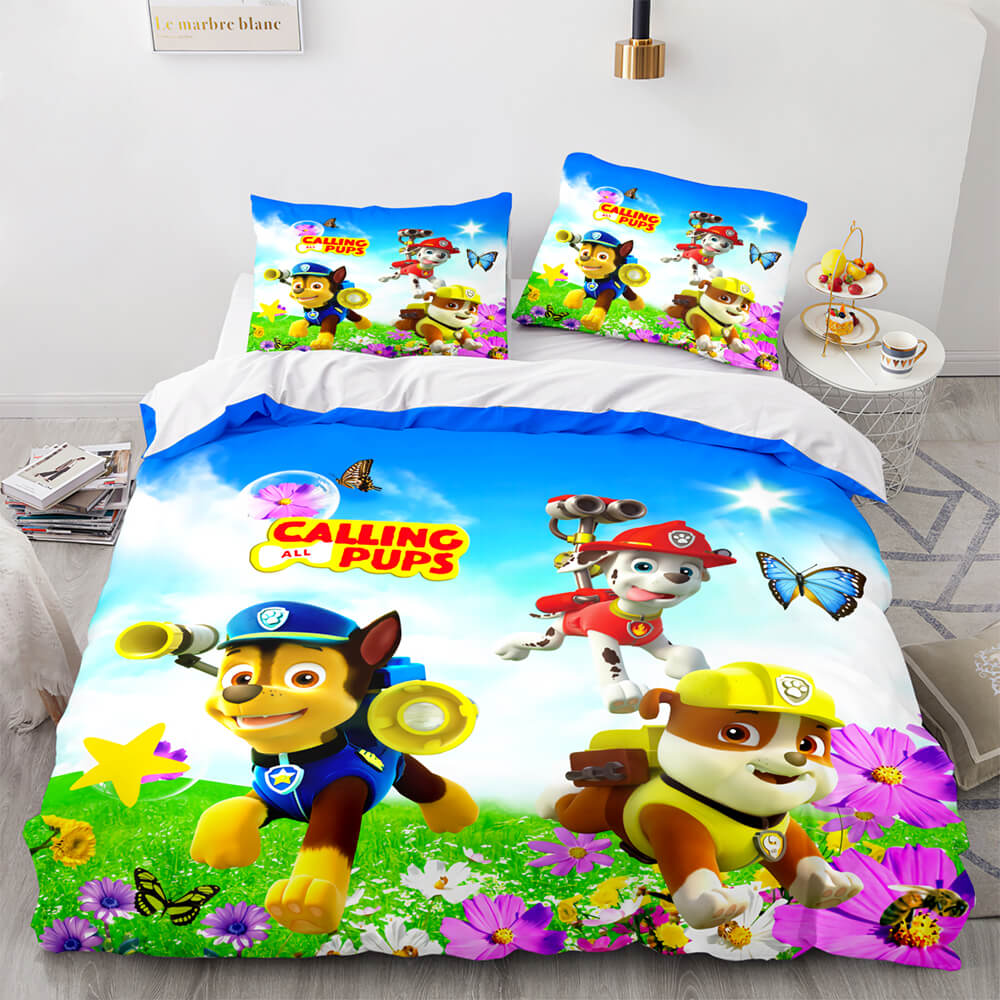
Single Bedding
Single bedding is designed for a standard UK single bed, which measures 90cm x 190cm (3ft x 6ft 3in). The typical dimensions for single duvet covers are 140cm x 200cm (55in x 79in), and for single fitted sheets, they are 90cm x 190cm (35in x 75in).
When selecting single bedding for children, consider the following factors:
- Material: Opt for soft, breathable, and hypoallergenic fabrics such as cotton or bamboo.
- Design: Choose kid-friendly patterns and colours to encourage a comfortable and enjoyable sleeping environment.
Double Bedding
Double bedding is suitable for a standard UK double bed, measuring 135cm x 190cm (4ft 6in x 6ft 3in). Common dimensions for double duvet covers are 200cm x 200cm (79in x 79in), and for double fitted sheets, they are 135cm x 190cm (53in x 75in).
When purchasing double bedding for children, keep these tips in mind:
- Quality: Ensure durable and easy-to-maintain materials, so the bedding lasts despite regular use and washing.
- Style: Pick designs that can grow with your child, avoiding themes they may outgrow quickly.
Queen Size Bedding
Queen size bedding is intended for a standard UK king size bed, measuring 150cm x 200cm (5ft x 6ft 6in). The usual dimensions for king size duvet covers are 230cm x 220cm (90in x 86in), and for king size fitted sheets, they are 150cm x 200cm (59in x 79in).
Here are some factors to consider when selecting queen size bedding for children:
- Comfort: Prioritise materials that provide warmth and cosiness without causing allergies or irritation.
- Adaptability: Opt for versatile designs that can accommodate changes in your child's taste and bedroom décor as they grow.
Choosing the Right Bedding
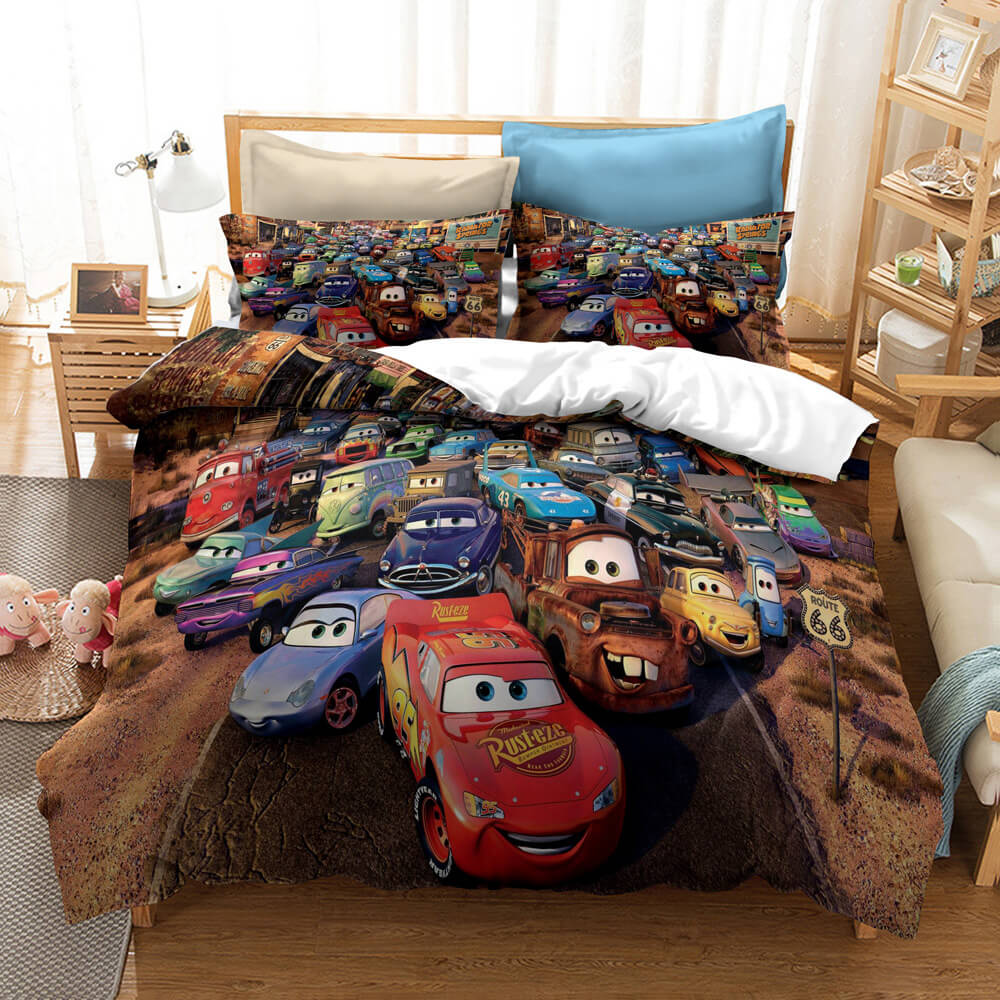
When selecting bedding for children, it's essential to consider their age, as well as seasonal factors. This ensures your child's comfort and safety, adapting to their distinct needs at various stages of development.
Age Consideration
It's vital to pick age-appropriate bedding to guarantee a child's comfort. For newborns and infants, sleeping bags or swaddle wraps are recommended. These options create a cosy environment that resembles the womb, providing a sense of security. Avoid using duvets, quilts, or pillows due to the risk of overheating or suffocation.
For toddlers, choose fitted sheets, lightweight blankets or duvets with low tog ratings. Toddlers may struggle with larger pillows; consider smaller, age-appropriate alternatives for better support.
Older children benefit from a mix of bedding: a fitted sheet, a light blanket, and a suitable-sized pillow. Experiment with different materials to identify your child's preference.
Seasonal Bedding Choices
Selecting the right bedding based on the season ensures your child remains comfortable throughout the year. Here are some seasonal suggestions:
- Spring: Opt for lightweight duvets or blankets. A 4.5 tog rating duvet is ideal for maintaining a comfortable temperature.
- Summer: Fitted sheets and a low tog (1.0–3.0) duvet will suffice. Alternatively, a light blanket made of materials like cotton or bamboo is perfect for hot nights.
- Autumn: Switch to warmer duvets with a tog rating of 7.0–10.5. Flannel or brushed cotton sheets will provide additional warmth.
- Winter: Keep your child cosy in the colder months with a high tog rating duvet (13.5–15.0). Heavier blankets and thermal sheets made of materials like flannelette are also suitable options.
Specialty Kids Bedding

Children often have unique needs and preferences when it comes to bedding. This has led to a rising demand for specialty kids bedding products. Two of the most sought-after types of specialty bedding are hypoallergenic and organic.
Hypoallergenic Bedding
Hypoallergenic bedding is a great solution for children who suffer from allergies or sensitive skin. These products are designed to reduce the accumulation of allergens like dust mites, mould, and pet dander. By choosing hypoallergenic bedding, parents can create a healthier sleeping environment for their children.
- Materials: Retailers offer hypoallergenic bedding made from materials such as 100% cotton or other natural fibres. These materials are less likely to cause skin irritation and are breathable.
- Benefits: Hypoallergenic bedding reduces the risk of allergy flare-ups, asthma attacks, and sleep disturbances. Making it an ideal choice for children with allergies or sensitive skin.
Organic Bedding
Parents who prioritise sustainability and environmental concerns often opt for organic bedding. Made from certified organic materials, this type of bedding follows strict production processes to minimise ecological impact and ensure chemical-free products.
- Certifications: Look for textiles with the Global Organic Textile Standard (GOTS) certification, as it assures the highest level of organic and fair-trade compliance.
- Advantages: Organic bedding is free from harmful chemicals (such as pesticides and synthetic dyes), and is produced under eco-friendly and ethical conditions.
When selecting specialty kids bedding, consider factors such as the child's specific allergies, environmental concerns, and durability of the materials. Make sure to follow care instructions for each bedding type to ensure longevity and effectiveness.
Maintenance and Care
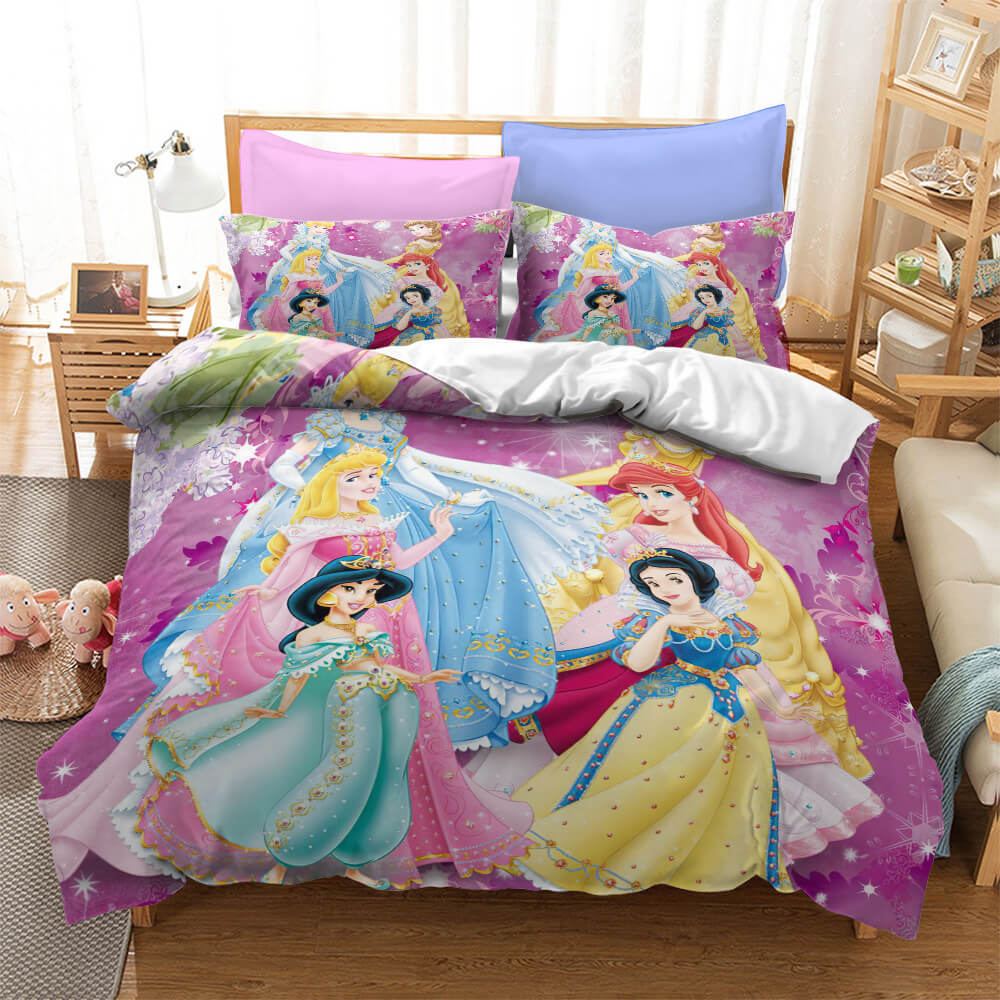
When it comes to children's bedding, maintaining its quality and appearance is crucial. To ensure the longevity of kids' bedding sets, follow the guidelines and tips provided in this article.
Washing Guidelines
It is important to wash children's bedding regularly to keep it clean and hygienic. Follow these simple steps for effective washing:
- Check the care label: Before washing, always consult the care label for specific instructions, as different materials require different care.
- Use mild detergents: Choose a gentle, fragrance-free detergent to preserve the colours and fabric quality.
- Cold water wash: Washing the bedding in cold water helps prevent fading and shrinking of the fabric.
- Avoid overloading the washing machine: Overloading can result in inadequate washing and damage to both the bedding and the machine.
- Air dry: Whenever possible, hang the bedding to air dry, avoiding direct sunlight to protect the colours.
Storage Tips
Proper storage can make a significant difference in preserving the quality of children's bedding. Here are a few storage tips:
- Fold neatly: Fold the bed linens neatly to prevent wrinkles and creases before storage.
- Choose a cool, dry place: Store the bedding in a cool, dry, and well-ventilated area to prevent dampness and the growth of mould or mildew.
- Avoid exposure to sunlight: Direct sunlight can fade the colours and damage the fabric. Keep stored bedding away from windows or other sources of direct sunlight.
- Use breathable storage containers: Opt for breathable containers or bags to allow air circulation, helping to keep the bedding fresh and prevent moisture build-up.
With proper maintenance and care, children's bedding can remain fresh, clean, and in excellent condition for years to come.
Ensembles de literie imprimés bricolage














